


ORGANS OF PARIS © 2024 Vincent Hildebrandt HOME ALL ORGANS

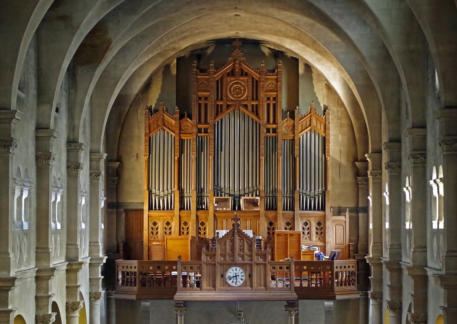
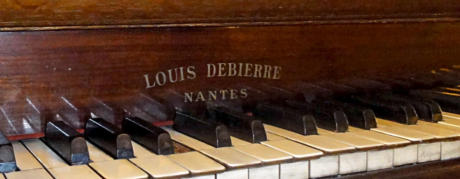

Saint-Lambert de Vaugirard is the work of the architect
Claude Naissant. It is one of the most beautiful
examples of neo-Romanesque architecture in Paris.
Built between 1848 and 1856, its interior offers a
relatively stripped-down universe, including the
magnificent neo-Gothic altarpiece of the axial chapel
with its angels, one of them playing the portable organ
and, in the left transept, a panel which represents
Saint Lambert, surrounded by episodes of his life,
made by Dorothée Sers-Hermann.

C1
The present instrument was built by Louis Debierre from
Nantes in 1901, replacing a modest 12-stop organ behind
the choir, built by Merklin. Until that time, only an empty
buffet was installed on the tribune, but, topped with a
single row of façade pipes, there was an illusion of the
presence of a large organ.
In 1950, Joseph Beuchet-Debierre restored and enlarged
the instrument by bringing it from 32 to 35 stops. Various
maintenance works were carried out by Beuchet-Debierre
in 1972, by Sébire & Glandaz in 1986 and by Bernard
Dargassies in 1999.
The console, signed by ‘Louis Debierre de Nantes’ and
composed of 3 keyboards of 56 notes and a German 30-
note concave pedal, is separated from the organ case (the
organist facing the organ). It is concealed by an oak façade
with a clock in its centre and topped by a pediment in the
neo-Gothic style of the buffet.
The three keyboards are mechanically powered by a
Barker machine*, traction is mechanical for the pedal and
pneumatic for the stops. The instrument has 35 stops of
high quality pipes almost entirely signed by Louis
Debierre.
(Text: Thierry Correard, translated into English by
OrgansofParis)
This organ has a special, unique system of Debierre to adjust,
on the keyboards, the pressing of the key and the drawing of
the valves, which allows to remedy small occasional
unwanted noises (‘cornements’) due to bad climatic
conditions in the church.
There are only three modifications made to this instrument in
the past, by Beuchet-Debierre in 1950: on the GO the Gambe
4 was replaced by a Doublette 2, on the Positif a Nasard et
Tierce were added and on the Swell a Plein Jeu III.
This is the only organ of Louis Debierre still existent in Paris
(besides the poyphone at the ‘Chapelle des missions
étrangères’).
*the patented Debierre version of the Barker machine
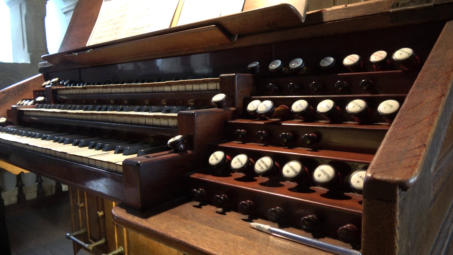

In the plan to maintain the cultural heritage of the City of
Paris, this organ is among the instruments, classified as
Historic Monuments, requiring a (partial) restoration.
Restoration issues
The organ of Saint-Lambert-de-Vaugirard was built in
1901 by the Nantes postman Louis Debierre. This
instrument underwent few transformations except a
complete lift in the 1950s carried out by
BeuchetDebierre, then regular maintenance and
repair work. Thus, although some games were
transformed or replaced in the instrument, the organ
of the Church of Saint-Lambert-de-Vaugirard
remained quite close to its original state. As the only
significant grandstand instrument installed by Louis
Debierre in Paris, this instrument has a definite
heritage interest, and characterizes the technique as a
major organ factor in the history of organist
technique. For several years, the association of
friends of the organ of Saint-Lambert-de-Vaugirard
(AOSL) wishes, in agreement with its organist Mr.
Dekeister, improvements and an evolution of the
instrument. The financing of this operation would be
provided in part by the patronage generated by the
AOSL. A preliminary study was carried out in July 2013
to identify organ design work in accordance with the
wishes expressed by users, while ensuring that the
heritage character of the instrument is preserved. As
this instrument is not protected under the Historic
Monuments, the specifications of the operation can
be designed by the City's services.
The chosen program meets the need for
improvements in the operation of the organ (wind
stability, reliability of the mechanics), sufficient flow
(installation of a complementary turbine) and options
for the game of the organist (serious octave of the
story on itself, 32' game at the Pedal and call of the
tirasses to the feet in separate mode). This work may
be the subject of three ordered tranches in order of
priority, with some actions to be carried out in the
same instalment.
Call to Patronage: 105.000 euros, exclusive the costs of
mastering the project, which will be taken care of by the
City of Paris.
Source
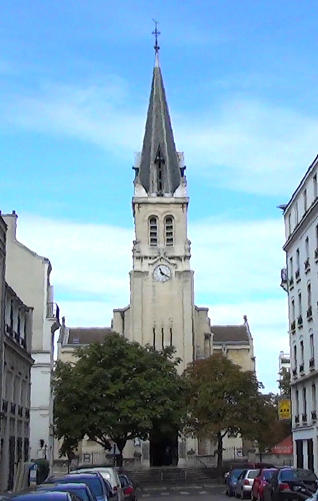
1901 - Louis Debierre (1)
1950 - Beuchet-Debierre (5)
1972 - Beuchet-Debierre (5)
1986 - Sebire/Glandaz (6)
1999 - Dargassies (6)
III/35 (32)
traction mécanique (claviers)
transmissions pneumatiques (jeux) -
composition
Organiste titulaire
Olivier Dekeister
Concerts
Occasionaly
Masses with organ
Saturday 6:00 PM;
Sunday 9:00, 11:00 AM and 6:30 PM
Videos
Olivier Dekeister
The organs of Paris
ORGANS OF PARIS © 2024 Vincent Hildebrandt ALL ORGANS
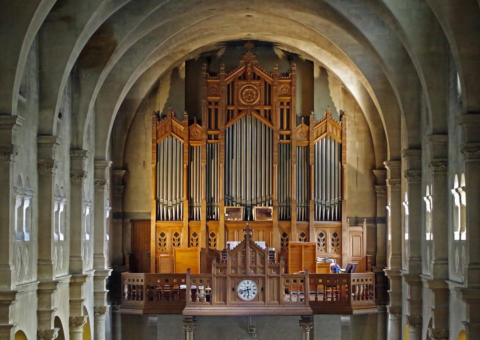
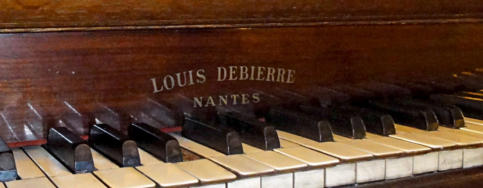
C1
The present instrument was built by Louis Debierre from
Nantes in 1901, replacing a modest 12-stop organ behind the
choir, built by Merklin. Until that time, only an empty buffet
was installed on the tribune, but, topped with a single row of
façade pipes, there was an illusion of the presence of a large
organ.
In 1950, Joseph Beuchet-Debierre restored and enlarged the
instrument by bringing it from 32 to 35 stops. Various
maintenance works were carried out by Beuchet-Debierre in
1972, by Sébire & Glandaz in 1986 and by Bernard Dargassies
in 1999.
The console, signed by ‘Louis Debierre de Nantes’ and
composed of 3 keyboards of 56 notes and a German 30-note
concave pedal, is separated from the organ case (the organist
facing the organ). It is concealed by an oak façade with a clock
in its centre and topped by a pediment in the neo-Gothic style
of the buffet.
The three keyboards are mechanically powered by a Barker
machine*, traction is mechanical for the pedal and pneumatic
for the stops. The instrument has 35 stops of high quality
pipes almost entirely signed by Louis Debierre.
(Text: Thierry Correard, translated into English by OrgansofParis)
This organ has a special, unique system of Debierre to adjust, on
the keyboards, the pressing of the key and the drawing of the
valves, which allows to remedy small occasional unwanted noises
(‘cornements’) due to bad climatic conditions in the church.
There are only three modifications made to this instrument in the
past, by Beuchet-Debierre in 1950: on the GO the Gambe 4 was
replaced by a Doublette 2, on the Positif a Nasard et Tierce were
added and on the Swell a Plein Jeu III.
This is the only organ of Louis Debierre still existent in Paris
(besides the poyphone at the ‘Chapelle des missions étrangères’).
*the patented Debierre version of the Barker machine
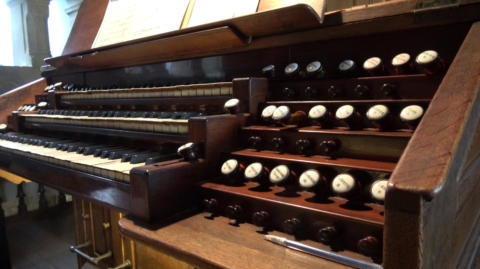
1901 - Louis Debierre (1)
1950 - Beuchet-Debierre (5)
1972 - Beuchet-Debierre (5)
1986 - Sebire/Glandaz (6)
1999 - Dargassies (6)
III/35 (32)
traction mécanique (claviers)
transmissions pneumatiques (jeux) -
composition
Organiste titulaire
Olivier Dekeister
Concerts
Occasionaly
Masses with organ
Saturday 6:00 PM;
Sunday 9:00, 11:00 AM and 6:30 PM
Videos
Olivier Dekeister






















